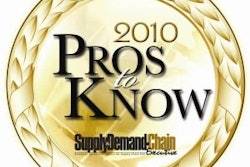
Companies large and small and in nearly every industry count on their private fleets as a competitive differentiator. Nearly two out of every three power-units on the highway today are run by private fleets. The National Private Truck Council recently reported that approximately 52 percent of all commodities shipped in the U.S. are hauled by private fleets versus for-hire carriers.
Commensurate with the strategic and customer service value of private fleets, they often represent one of the most significant costs within the company. In an effort to gauge the cost performance of the fleet, managers frequently rely on external sources to provide benchmarking on key metrics, such as cost per mile, cost per vehicle and so on. Undoubtedly, these benchmarks are well-qualified and provide good data points for fleet performance evaluation. But no two fleets are alike, so external benchmarks are often discounted by the recipient as being less relevant given the unique characteristics of their fleet versus those included in the benchmarking analysis. These benchmarking exercises thus conclude, in many cases, with few actionable results. The decision to conduct benchmarking and the subsequent results of the analysis follows this familiar progression:
1. Justification: "Before looking critically at our own operation, let's look at what others are doing. If we can see that someone else is doing it better, then we will know that we need to improve."
2. Equivocation: "Well, those companies are not exactly like ours. We are really different. So the benchmarks don't apply. Besides, the way their data are collected and interpreted does not match our data, so it's not really apples-to-apples."
3. Self-validation: "We recently looked at benchmarks that our current service providers have. The data clearly show that we are world-class."
Clearly, this exercise does not lead to actionable opportunities for performance improvement. Adding to the complications for fleet managers, the benchmarks may have been provided by their maintenance or leasing providers, which is a bit of a "fox in the hen house" problem as these sources of external data are often responsible for ensuring that the customer is performing at "world-class" levels. This "double whammy" of events can compromise the value of externally provided benchmarks as a reliable approach to performance improvement. Fleet managers should ask themselves if there is a more targeted way to identify practical opportunities for improvement in their fleets. We think the answer is "Yes!"
Here are a few thoughts on how.
One of the largest roadblocks to fleet cost analysis, and another reason that external benchmarks are problematic, is the availability of robust, internal data that can be analyzed. In many cases, the necessary vehicle-level data are fragmented and unreliable. Companies typically fit one of two models: 1) decentralized fleet operations that record vehicle-level data (maintenance costs, mileage, etc.) in varied ways, which hampers the ability of managers to analyze the performance of the fleet, or 2) accounting data that are reliable in terms of the aggregate costs, but that lack the location- and vehicle-specific operational data necessary to perform a thorough analysis. It is these gaps that make it difficult to identify and size performance improvement opportunities that fleet managers intuitively know are there. They simply cannot substantiate for key business stakeholders who "own" the fleet what their gut tells them is true.
Recently, a Tenzing Consulting client that operates a fleet of well over 10,000 light and medium duty service vehicles asked us to perform a "total cost of ownership" (TCO) assessment to determine where they could reduce costs while maintaining or improving customer service. In keeping with the earlier point, the client suffered from both of the data availability problems cited above and had little in the way of reliable, vehicle-level data from which we could draw. But they did have location-specific P&L data as well as vehicle-type data. Using the available information as a baseline, we constructed a comprehensive database. We then linked location-specific cost data with location-specific fleet information. This produced a clear and valid basis for productive internal discussions on cost performance.
This database also enabled us to perform statistical analysis to model the "should-cost" at the vehicle level for maintenance cost, deployment efficiency and other key TCO metrics. As a departure from theoretical and more generalized external benchmarking, this analysis was further tailored to other performance-critical variables that existed in their fleet, such as the geographic density of operating territories and vehicle application. This specificity gave them the critical insight on key cost drivers in the fleet and key metrics to determine which locations were outperforming others and in what cost areas. The result was a clear understanding of the best demonstrated performance within the fleet, a look at where performance could likely be improved, and what the improvements were worth financially. Having this actual data in hand was the start of a quest to discover why the best were the best — what best practices had they developed that others could use? This internal "benchmarking" proved to be far more credible — and therefore more actionable — for the client and enabled the implementation of several high-value performance improvement initiatives that will continue to benefit the organization far into the future. Furthermore, as the initiatives moved into the implementation phase, the original statistical estimates of the value of these strategies turned out to be extremely accurate.
External benchmarks do not consistently produce this degree of practical, tangible results. Looking at what "the market" is doing rarely produces the actionable insights that a thorough understanding of one's own operation can yield. Therefore, we believe that internal benchmarking is a superior approach to performance improvement and ultimately competitive advantage in fleet operations.















